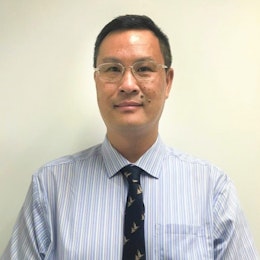SG 18/24
Singapore is intending to regulate two classes of chemicals and several mercury-added products as hazardous substances. The proposed changes are to apply from January 2025.
As a signatory, Singapore has international obligations associated with the Stockholm Convention on persistent organic pollutants (POP) and the Minamata Convention on mercury and its compounds.
On January 18, 2024, Singapore’s National Environment Agency (NEA) launched a four-week consultation to regulate two groups of chemicals and nine mercury-added products as hazardous substances (HS) under the nation’s Second Schedule of the Environmental Protection and Management Act (EPMA) and the Schedule of the EPM (HS) Regulations.
The two groups of chemicals are:
- Medium chain chlorinated paraffins (MCCP) – chlorinated paraffins with carbon chain lengths in the range C14-17 and chlorination levels equal to or greater than 45% chlorine by weight
- Long-chain perfluorocarboxylic acids (LC-PFCA) with carbon chain lengths from 9 to 21, their salts and LC-PFCA-related compounds
These two categories of chemicals are candidate POP under the Stockholm Convention (SC). They have been assessed by the Stockholm Convention Persistent Organic Pollutants Review Committee (POPRC) to be highly toxic, persistent and can bio-accumulate to cause long lasting negative effects to the environment. The POPRC is conducting further assessment on the usage of MCCP and LC-PFCA and may suggest limited exemptions for certain (essential) uses.
In anticipation of the likelihood of these two classes of chemicals will be recommended for adoption into Annex A of the Stockholm Convention for elimination at the 12th Conference of the Parties (COP) in 2025, the NEA is intending to pre-emptively impose regulatory controls on the import, export, manufacture, offer for sale, transport, purchase, storage and/or use of these chemicals.
Highlights of the use of MCCP and LC-PFCA are summarized in Table 1.
| MCCP | LC-PFCA | |
|---|---|---|
| Application |
|
|
Table 1
Additionally, the NEA proposes to control nine mercury-added products as it has been agreed these will be listed under Annex A to the Minamata Convention, for them to be phased out by the end of 2024. These products are:
- Cold cathode fluorescent lamps and external electrode fluorescent lamps for electronic displays
- Compact fluorescent lamps with an integrated ballast (CFL.i) for general lighting purposes that are ≤ 30 watts with mercury content not exceeding 5 mg per lamp burner
- Melt pressure transducers, melt pressure transmitters and melt pressure sensors, except those installed in large-scale equipment or those used for high precision measurements
- Mercury vacuum pumps
- Photographic film and paper
- Propellant for satellites and spacecraft
- Strain gauges for plethysmographs
- Tire balancers and wheel weights
- Very high accuracy capacitance and loss measurement bridges and high frequency radio frequency switches and relays in monitoring and control instruments with a maximum mercury content of 20 mg per bridge switch or relay [except those used for research and development purposes]
Comments will be accepted until February 15, 2024
The NEA is intending to gazette the regulatory changes by June 2024, followed by a six-month transitional period with the changes being applied from January 2025.
With an extensive global network of highly experienced technicians and local state-of-the-art laboratories, SGS’s Restricted Substance Testing Service (RSTS) has developed a one-stop solution for manufacturers and suppliers. Discover more on our website, visit our RSTS cloud and contact us if you would like to learn more about how SGS can support. In the end, it’s only trusted because it’s tested.
© SGS Société Générale de Surveillance SA. This publication or website is a property of SGS Société Générale de Surveillance SA. All contents including website designs, text, and graphics contained herein are owned by or licensed to SGS Société Générale de Surveillance SA. The information provided is for technical and general information purposes only and offers no legal advice. The information is no substitute for professional legal advice to ensure compliance with the applicable laws and regulations. All information is provided in good faith “as is”, and SGS Société Générale de Surveillance SA makes no representation or warranty of any kind, express or implied, and does not warrant that the information will be error-free or meet any particular criteria of performance or quality.





